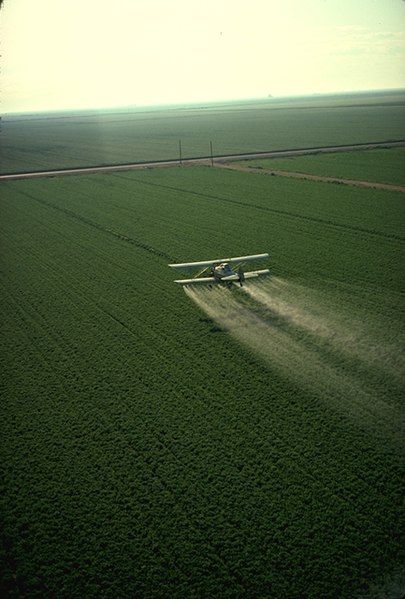Pesticides in the United States
Pesticides in the United States are used predominantly by the agricultural sector, but approximately a quarter of them are used in houses, yards, parks, golf courses, and swimming pools.
A plane flying over a field in California, when spraying crops like this there is a chance of pesticide drift, which can affect neighboring towns and residents with adverse reactions.
Tractor spraying pesticides, 2008
Pesticide bags in Fresno, California during May of 1972 read 'You get results with Best Chemicals'.
Environmental impact of pesticides
The environmental effects of pesticides describe the broad series of consequences of using pesticides. The unintended consequences of pesticides is one of the main drivers of the negative impact of modern industrial agriculture on the environment. Pesticides, because they are toxic chemicals meant to kill pest species, can affect non-target species, such as plants, animals and humans. Over 98% of sprayed insecticides and 95% of herbicides reach a destination other than their target species, because they are sprayed or spread across entire agricultural fields. Other agrochemicals, such as fertilizers, can also have negative effects on the environment.
A farmworker wearing protective equipment pouring a concentrated pesticide into a sprayer tank with water.
Drainage of fertilizers and pesticides into a stream
Pesticides being sprayed onto a recently plowed field by tractor. Aerial spraying is a main source of pesticide drift and application on loose topsoil increases the chance of runoff into waterways.
Aerial application of a mosquito pesticide over a city







